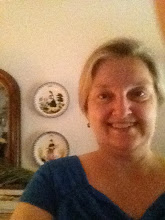
I'm at Starbucks. OK, it's in Istanbul. I swore I wouldn't go, but I couldn't stand it any longer. As we were wandering around Taksim Square, lost and in need of a a fix of caffeine we noticed no less than two Starbucks. After we had passed the umpteenth Doner Kebab shop and not really being all that hungry, the dark and familiar doorway of Starbucks literally sucked us in. So now I'm sitting here with my tall Americano and Craig with his Chai trying to orient ourselves to a new part of town. Starbucks is Starbucks, no matter where you go.
Another thing I've noticed no matter where we've gone (and I've said this before) is that when you strip away the environment and material of the world, people everywhere are pretty much the same. There are kookie whistle blowing street people in every city. There are kind people everywhere. A good sales man or woman is good in Turkey, Greece, or New York. People everywhere have to work for a living, doing the best they can. People everywhere agree that prayer is important as every tolling bell and call to prayer attests, but most people don't pray as they should or could. I don't see any more people running to the mosque when the call to prayer comes than I do to church when the bells toll. No matter how long I live, I will never see the whole world, but the more I do see of it, the more hopeful I am that if we could learn from one another rather than try to convince one another that our way is better, that the world would thrive.
Staying in the Sultanahmet, in the midst of religious and secular monuments like Hagia Sophia jealously plundered by both Christian and Muslim forces in their turn reminds me of the cost we bear for living in competition rather than companionship. I'm not talking about the kind of competition found in sport which involves the heart and soul of the competitors, but the kind of competition that cares nothing for the other person except to take away a prize. Competition based on covetousness depends on ignorance. In competition based on covetousness, to know the "other" is to be weakened. Companionship on the other hand, implies knowledge of the "other." Even the word implies a sustained period of togetherness which permits one person to know another and even to share with another. In our world, distance and language separate us from one another and don't easily permit companionship, but the world is shrinking, so both the opportunity and need for companionship must increase. If distance and language are the problem, then in every opportunity I have on this trip to bridge distance and language I find hope. And I hope for more.










